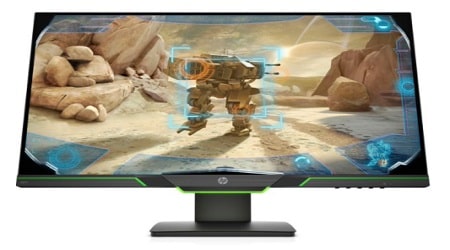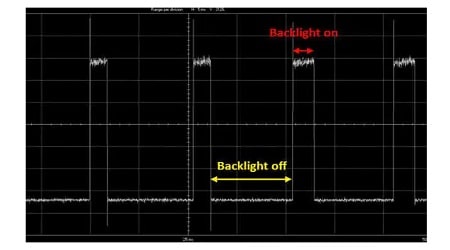What is Flicker-Free Technology and PWM in Monitors that you read in reviews and reviews of monitors and TVs?
If you have headaches, blurred vision, or eye strain when using your computer, you can choose a monitor that has this technology. It will help!
If you use the Flicker-Free technology, you do not need Pulse Width Modulation (PWM) to regulate the brightness.
This flickering causes your eyes to change size. It can cause other problems, such as eye strain and eye fatigue. This problem can be solved with best monitor for eye strain.
PWM stands for the rapid turning on and off of the backlight in a monitor or TV.
The human eye will not see this frequency, but it will be noticeable when you use your camera phone to picture your screen.
There are electronic devices that use PWM to regulate the brightness ratio.
One example is a phone with an OLED screen. When you have the brightness low in a dark environment, you will see the Flicker effect.
Flicker-Free is a technology that makes the screen more comfortable when you are using it. It uses DC instead of PWM.
This is so that the screen doesn’t flicker. If it did, people might have a hard time reading and would get tired of their eyes.

Many people have worked with monitors without the technology for many years. They feel sick, but they don’t know why.
The issue is that people who need a low brightness setting for work don’t like it when the screen is bright.
A monitor with Flickerless technology is a good choice. If you work in a dark environment or like to keep the brightness of your monitor low, this is important.
It is precisely in this situation that even monitors with the Flicker-Safe label turn to PWM technology. They display content at low brightness levels.
Therefore, the ideal would be to keep your brightness level above 50% or use the Night Light mode.
The blue light on the monitor will be less, so it will be a little darker. The image turns yellow.
Table of Contents
What is PWM (Pulse-Width Modulation)
Pulse-Width Modulation (PWM) or Pulse Width Modulation (MLP) is a quick switch between on and off in the digital signal to produce an analog signal.
For example, if a monitor is at 60% brightness, then 60% of the time, the digital signal will be on, and 40% of the time, it will be off.

In the ON/OFF state, it happens quickly. It does this at a frequency called Hertz (Hz). When the frequency is faster, you can’t even see it.
This will imitate the analog signal better without reducing the frequency of work cycles that cause flickering.
PWM is not just for monitors and TVs. PWM can also control brightness in fan controllers and even smartphone screens.
However, on the screens, it makes people feel sick. They might get headaches, and their eyes could hurt.
To reduce or eliminate the flickering problem on your monitor without Flicker Free, turn up the brightness level. Make it brighter than 60%. To reduce blue light, use software that reduces blue light.
The lower the brightness level, the more often the screen will turn off. This is called Pulse Width Modulation and can cause flickering. Keep the range high to avoid this.
Read Here About: What is a Monitor?
How to tell if your monitor is Flicker-Free or uses PWM
You can test whether your monitor has a PWM Flicker by going to this website and checking out the test.
This is where you see the artifacts in the lines when you change your monitor’s brightness level.
An easy way to tell if your monitor is flickering is to use your phone’s camera to take a video of the screen.
If you see waves that go back and forth or up and down, then your monitor is not Flicker-Free.
An even more accessible (but less accurate) way to test your screen’s brightness is to put your monitor in a brightness range you like. This will either be more visible by 50% or less.
Read and find here- Best Anti Glare Screen Protector For Computer Monitor.
Some devices have PWD and a high refresh rate to solve the problem of flickering screens.
To check if your phone is defective, put it on a white screen and then move “to say goodbye.” Watch the screen carefully to see if there is a strobing effect (strobe) when you move it.
Find Here: Best Vertical Monitor.
Last words of what is flicker-free technology and PWM in monitors?
Choosing a Flicker-Free monitor can be an excellent decision to avoid eyestrain, nausea, and headaches, especially if you spend the day (or night) in front of a monitor, like studying or working.
Most modern monitors are flicker-free. This means that they use DC to regulate the brightness. They provide a constant stream of light at any level of brightness.
Unfortunately, not all monitors are Flicker-Free. Most of them use PWM technology at lower brightness levels.
Therefore, our only way out of this is to use software or modes that reduce the blue light on the screen. This will help against glare without causing flickering.
In our monitor evaluations, we always tell you if the model is flickers less.
If you have an old monitor or want to buy a new one, consider many things. We recommend the best monitors for eye comfort, image quality, and ergonomics.
We hope this article has helped you understand the difference between Flicker-Free, Flicker-Safe, and PWM technology.
Read Also About: Best Monitor Calibrator.

